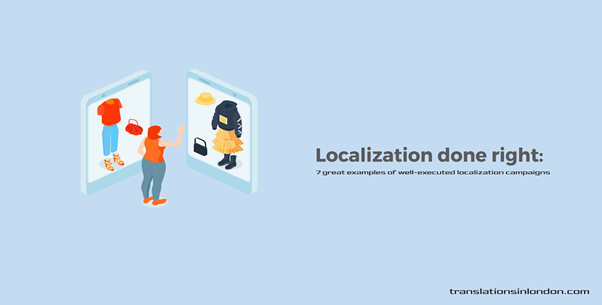Any brand looking to break into a new market and, in the long run, go global must understand how important it is for its message and product to align with the target market. While it is crucial to overcome language barriers, perhaps the greatest hurdle when entering new markets is actually navigating through cultural and social differences.
To successfully enter any new market, brands must align their image with the cultural nuances and preferences while trying to stay true to their original goals, and this is where effective localisation plays a leading role.
Localisation is adapting your content, products and services to a local market. To successfully localise your brand, you must speak your target market’s language on the surface and subsurface levels.
This article will be looking at some global entities that adapted their brand to local markets successfully and the localisation strategies they used to achieve results.
7 Companies That Got Localisation Right: Their Strategies and End Results
Although localisation may be part of the itinerary for a host of global brands. Not every entity gets it right. In fact, there have been several localisation fails in the past that had financial and reputational implications on the brands involved. But this post takes the alternative route to explore brands that actually got their localisation efforts right.
- Netflix
NETFLIX is a localisation success story with a presence in over 190 countries. By adapting its technology and process to cater to the indigenous markets worldwide, the company was able to amass a record-breaking 213 million subscribers in all its active regions.
Netflix’s localisation strategy doesn’t just involve translating their user interfaces; they create content local to the specific regions and demographics where they have a significant presence. This typically involves translating, subtitling and voice dubbing content and creating raw content that includes elements relatable to the region in question. Even their movie recommendations are tailored to appeal to the region it’s operating from.
2. Airbnb
Airbnb has managed to spread across 220 countries by providing its clients with authentic and personalised hospitality experiences.
Their website and app are translated into 63 different languages. User-generated content such as reviews and listings are also automatically translated, ensuring customers have a personalised experience.
Lastly, they take it up a notch by providing localised guides that point out places to see and things to do in the locality.
3. CocaCola
Before the arrival of brands like Netflix and Airbnb, Coca Cola was one of the few brands to bridge the regional barrier and garner loyalty on a global level. They successfully localised their “share a coke” campaign by using names common to specific geographic regions. For example, in African countries, Coca Cola used tribal names synonymous with the culture.
In China, where it’s considered disrespectful to call a person with their initial name, Coca Cola replaced the “name” section with phrases like “close friend” and “classmate”, thereby overcoming the cultural difference while still managing to keep the authenticity of the campaign.
4. Slack
Slack is an app dedicated to making the communication process simpler, faster and more fun for work teams. Launched in 2012, it’s grown to include a database of over 400 thousand companies worldwide.
Slack localises its apps for foreign shores by translating its interface and localising the witty remarks, idioms, and anecdotes for which they’re best known. Using expressions, stories and references familiar to the region in question helps them ratify their trust with the global users.
5. Apple
A perfect example of localisation is how Apple handled the “I’m a Mac I’m a PC” campaign that differentiated their Mac Computers as simple but stylish. Although this marketing campaign succeeded in the western world, it would have flopped in Japan.
Japanese culture frowns upon belittling competitors; therefore, the Mac versus Windows PC in Japan would have come across as tacky and unpleasant. So, instead of simply translating the whole campaign, they developed a new advertorial strategy. They recruited two well-known comedians and published ads that depicted PCs as perfect for formal settings, while Macs were great for individuals who wanted to have fun.
6. Nike
With humble beginnings, which started almost 60 years ago in Oregon, Nike has expanded into over 170 countries. On the surface level, Nike’s global strategy transcends content to involve partnering with influential sporting personalities from around the world. But on a content level, they were able to localise their web and app platforms for major languages from all the continents and even went ahead to localize their SEO glossaries. Nike also localised its product offerings, and a perfect example was when they launched the Chinese buyers’ lion, tiger, and shark-themed designer shoes.
7. Nintendo
Japanese gaming hardware giant Nintendo conducts localisation and product development tasks together from the get-go. They gather a group of localisation experts who are in charge of translating the games, creating marketing content, filming brand videos and eventually launching the product on western soil.
Conclusion
From the example cited above, it is evident localisation is indispensable for any company looking to break into the international market.
While there is a size-fits-all approach for the perfect localisation execution, there are definitely strategies brands can adopt to ensure success while operating on a budget. Although the big companies might have the budget to hire in-house localisation teams, other smaller brands might be best suited to go with a professional language service provider like TIL for their global expansion journey.

